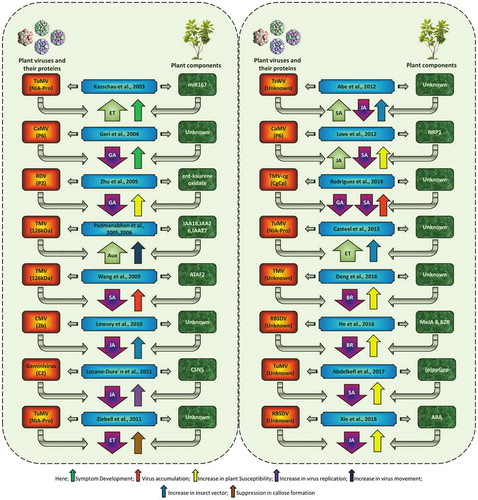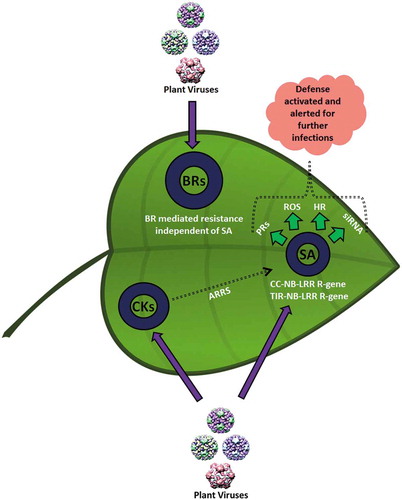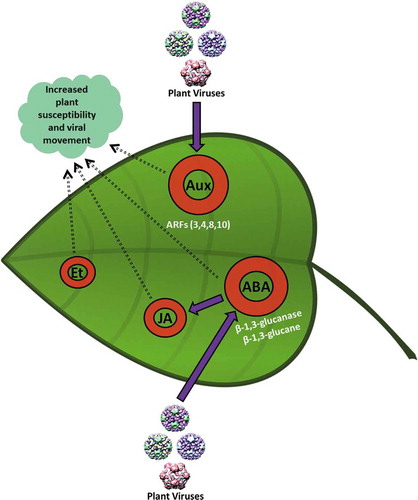Figures & data
Figure 1. Role of phytohormones in plant–virus interactions. Here, some abbreviations include IAA (indole acetic acid), NRP1 (neuropilin-1), and MeJA (methyl jasmonate). BZR (brassinazole), (p)ppGPP (nucleotides guanosine tetraphosphate and pentaphosphate), ABA (abscisic acid), TuMV (Turnip mosaic virus), CaMV (Cauliflower mosaic virus), RDV (Rice dwarf virus), TMV (Tobacco mosaic virus), CMV (Cucumber mosaic virus), TsWV (Tomato spotted wilt virus), and RBSDV (Rice black-streaked dwarf virus). The articles cited include Refs. Citation29–Citation45.

Figure 2. Positive impact of phytohormones on plant defense mechanisms against virus infection. Salicylic acid (SA) signaling exhibits the major defensive pathways through nucleotide-binding leucine-rich repeat (NB-LRR) genes. These defense pathways are triggered by R proteins through SA activation, RNA interference, accumulation of reactive oxygen, and hypersensitive responses. These pathways activate the plant defenses against viral infection where systemically acquired resistance (SAR) and siRNAs are activated by SA at distal sites. Similar to SA, cytokeratins (CKs) and brassinosteroids (BRs) strengthen the plant defense against biotrophs.

Figure 3. Negative impact of phytohormones upon plant defenses against viruses. Aux and SA have an antagonistic relationship. Movement of several types of viruses is dependent upon Auxin response factors (ARFs), e.g., TMV. Similarly, Et and SA show antagonism and are actively involved in CaMV symptom development. TMVcg also antagonizes the pathway downstream of SA signaling and is involved in symptom development on Cauliflower mosaic virus (CaMV) infection, systemic movement of TMVcg, and infection establishment. JA and ABA show multiple characteristics regarding plant defenses. For example, at earliest of the virus infection, JA supports plant defense systems, but once the infection is established solely and gets matured, JA production turns towards the favor of virus. ABA antagonizes with the SA pathway leading towards the reduction in resistance at local sites of infection.

